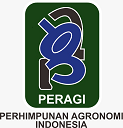Evaluasi Lokus Kloroplas untuk DNA Barcoding pada Marga Stelechocarpus (Annonaceae) Secara In-Silico
Abstract
Stelechocarpus merupakan salah satu genus anggota famili Annonaceae yang tumbuh di kawasan Asia-Pasifik. Sebagai salah satu tumbuhan yang kurang dikenal oleh masyarakat maka perlu adanya upaya konservasi karena jenis Stelechocarpus mempunyai banyak manfaat di bidang farmasi dan kosmetika. Salah satu strategi mendukung upaya konservasi yaitu dengan DNA barcoding yang masih sedikit informasinya untuk jenis Stelechocarpus. Penelitian ini bertujuan untuk mengevaluasi lokus daerah kloroplas secara in-silico yang dapat digunakan sebagai DNA barcode anggota genus Stelechocarpus (Annonaceae). Penelitian ini dilakukan secara in-silico dengan mengekstrak sekuen penanda kloroplas meliputi rbcL, trnL-F, matK, psbA-trnH, dan ndhF yang terdapat pada pangkalan data NCBI. Hasil penelitian yang dilakukan menunjukkan bahwa hanya diperoleh 18 nomor sekuen lokus kloroplas dari dua jenis pada genus Stelechocarpus, meliputi S. burahol dan S. cauliflorus. Lokus psbA-trnH dan ndhF mengindikasikan dapat digunakan sebagai penanda untuk studi keragaman genetik pada S. burahol. Di sisi lain, lokus rbcL, trnL-F, dan matK mengindikasikan dapat digunakan untuk studi keragaman genetik pada genus Stelechocarpus.
Keywords
Full Text:
PDFReferences
Amin, A., Radji, M., Mun’im, A., Rahardjo, A., & Suryadi, H. (2018). Antimicrobial activity of ethyl acetate fraction from Stelechocarpus burahol fruit against oral bacteria and total flavonoids content. Journal of Young Pharmacists, 10(2), s97–s100. https://doi.org/10.5530/jyp.2018.2s.19
Anzani A. N, Martiansyah I, Yuliani N. 2021. Studi in silico DNA barcoding pada bunga soka (Ixora). Di dalam: Prosiding Biologi Achieving the Sustainable Development Goals with Biodiversity in Confronting Climate Change. Gowa, 08 Nov. 2021. Hlm 168-177.
Aulia, A. (2022). Studi in silico potensi DNA barcode berbasis DNA kloroplas (cpDNA) untuk identifikasi variasi genetik Opuntis sp. Jurnal Syntac Admiration, 3(11), 1383–1394.
Cahyaningsih, R., Compton, L. J., Rahayu, S., Brehm, J. M., & Maxted, N. (2022). DNA barcoding medicinal plant species from Indonesia. Plants, 11(10), 1–22. https://doi.org/10.3390/plants11101375
Cai, Y., Wang, F., Tan, G., Hu, Z., Wang, Y., Ng, W. L., Wu, W., Liu, Y., & Zhou, R. (2019). Hybridization of Bornean Melastoma: implications for conservation of endemic plants in Southeast Asia. Botany Letters, 166(2), 117–124. https://doi.org/10.1080/23818107.2019.1585284
Chaowasku, T. (2020). Toward a phylogenetic reclassification of the subfamily ambavioideae (Annonaceae): Establishment of a new subfamily and a new tribe. Acta Botanica Brasilica, 34(3), 522–529. https://doi.org/10.1590/0102-33062020abb0051
Darusman, H. S., Rahminiwati, M., Sadiah, S., Batubara, I., Darusman, L. K., & Mitsunaga, T. (2012). Indonesia kepel fruit (Stelechocarpus burahol) as oral deodorant. Research Journal of Medicinal Plant 6(2), 180–188).
Dinas Lingkungan Hidup Daerah Istimewa Yogyakarta (DLH DIY). 2019. Seri Flora Identitas: Kepel Si Pohonnya Putri Raja. https://dlhk.jogjaprov.go.id/seri-flora-identitas-kepel-si-pohonnya-putri-raja. [30 November 2022].
Edwards, C. E., Tessier, B. C., Swift, J. F., Bassüner, B., Linan, A. G., Albrecht, M. A., & Yatskievych, G. A. (2021). Conservation genetics of the threatened plant species Physaria filiformis (Missouri bladderpod) reveals strong genetic structure and a possible cryptic species. PLoS ONE, 16(3), 1–20. https://doi.org/10.1371/journal.pone.0247586
Kramer, A. T., & Havens, K. (2009). Plant conservation genetics in a changing world. Trends in Plant Science, 14(11), 599–607. https://doi.org/10.1016/j.tplants.2009.08.005
Kress, W. J. (2017). Plant DNA barcodes: Applications today and in the future. Journal of Systematics and Evolution, 55(4), 291–307. https://doi.org/10.1111/jse.12254
Ladeska, V., Dwita, L. P., Oktaviany, F., Putri, O. F., Salamah, Y., & Amelia, F. (2022). Effects of Stelechocarpus burahol [Blume] leaf ethanol extract ointment on burns healing. Tropical Journal of Natural Product Research, 6(9), 1434–1439.
Larranaga, N., & Hormaza, J. I. (2015). DNA barcoding of perennial fruit tree species of agronomic interest in the genus Annona (Annonaceae). Frontiers in Plant Science, 6, 1–8. https://doi.org/10.3389/fpls.2015.00589
Lestari, D. A., Azrianingsih, R., & Hendrian, H. (2018). Filogenetik jenis-jenis Annonaceae dari Jawa Timur Koleksi Kebun Raya Purwodadi berdasarkan coding dan non-coding sekuen DNA. Journal of Tropical Biodiversity and Biotechnology, 3(1), 1. https://doi.org/10.22146/jtbb.28308
Li, X., Yang, Y., Henry, R. J., Rossetto, M., Wang, Y., & Chen, S. (2015). Plant DNA barcoding: from gene to genome. Biological Reviews of the Cambridge Philosophical Society, 90(1), 157–166. https://doi.org/10.1111/brv.12104
Minter, M., O’Brien, D., Cottrell, J., Ennos, R., Hill, J. K., & Hall, J. (2021). Exploring the potential for ‘Gene Conservation Units’ to conserve genetic diversity in wild populations. Ecological Solutions and Evidence, 2(2), 1–9. https://doi.org/10.1002/2688-8319.12061
Nagarajan M, Prabhu VR, Kamalakkannan R, Sinu PA. 2020. DNA Barcoding: Implications in Plant–Animal Interactions. In: Trivedi, S., H. Rehman, S. Saggu, C. Panneerselvam, S. Ghosh (eds). DNA Barcoding and Molecular Phylogeny. Switzerland: Springer. p 83-101.
Peraturan Menteri Lingkungan Hidup dan Kehutanan RI No. P.106/MENLHK/SETJEN/KUM.1/12/2018 tentang Perubahan Kedua atas Peraturan Menteri Lingkungan Hidup dan Kehutanan No. P.20/MENLHK/SETJEN/KUM.1/6/2018 tentang Jenis Tumbuhan dan Satwa yang Dilindungi.
Phillips, R. D., Reiter, N., & Peakall, R. (2020). Orchid conservation: From theory to practice. Annals of Botany, 126(3), 345–362. https://doi.org/10.1093/aob/mcaa093
Rachmat, H. H., Subiakto, A., & Kamiya, K. (2016). Short Communication: Genetic diversity and conservation strategy considerations for highly valuable medicinal tree of Taxus sumatrana in Indonesia. Biodiversitas, 17(2), 487–491. https://doi.org/10.13057/biodiv/d170213
Simpson MG. 2019. Plant Systematics, third ed. New York: Elsevier.
Soeroto, E. hasthiati, Priatmodjo, D., Wisnubudi, G., & Sukartono, I. (2018). Pembibitan dan Pengembangan Tanaman Buah Lokal. Pusat Pemberdayaan Masyarakat Universitas Nasional (PPM-UNAS).
Su, Y. C. F., Smith, G. J. D., & Saunders, R. M. K. (2008). Phylogeny of the basal angiosperm genus Pseuduvaria (Annonaceae) inferred from five chloroplast DNA regions, with interpretation of morphological character evolution. Molecular Phylogenetics and Evolution, 48(1), 188–206. https://doi.org/10.1016/j.ympev.2008.03.028
Suwandi, A. O., Pramono, S., & Mufrod. (2012). Pengaruh konsentrasi ekstrak daun kepel (Stelechocarpus burahol (BL) Hook f. & Th.) terhadap aktivitas antioksidan dan sifat fisik sediaan krim. Majalah Obat Tradisional, 17(2), 27-33.
Tisnadjaja, D., Saliman, E., Silvia, S., & Simanjuntak, P. (2006). Study of burahol (Stelechocarpus burahol (Blume) Hook & Thomson) as an antioxidative compounds containing fruit. Biodiversitas Journal of Biological Diversity, 7(2), 199–202. https://doi.org/10.13057/biodiv/d070223
Turner, I. M. (2018). Annonaceae of the Asia-Pacific region: names, types and distributions. Gardens’ Bulletin Singapore, 70(2), 409–744. https://doi.org/10.26492/gbs70(2).2018-11
Wang, S. Q. (2020). Genetic diversity and population structure of the endangered species Paeonia decomposita endemic to China and implications for its conservation. BMC Plant Biology, 20(1), 1–14. https://doi.org/10.1186/s12870-020-02682-z
Willi, Y., Kristensen, T. N., Sgro, C. M., Weeks, A. R., Ørsted, M., & Hoffmann, A. A. (2022). Conservation genetics as a management tool: The five best-supported paradigms to assist the management of threatened species. Proceedings of the National Academy of Sciences of the United States of America, 119(1), 1–10. https://doi.org/10.1073/pnas.2105076119
Xue, B., Thomas, D. C., Chaowasku, T., Johnson, D. M., & Saunders, R. M. K. (2014). Molecular phylogenetic support for the taxonomic merger of Fitzalania and Meiogyne (Annonaceae): New nomenclatural combinations under the conserved name Meiogyne. Systematic Botany, 39(2), 396–404. https://doi.org/10.1600/036364414X680825
Refbacks
- There are currently no refbacks.


























